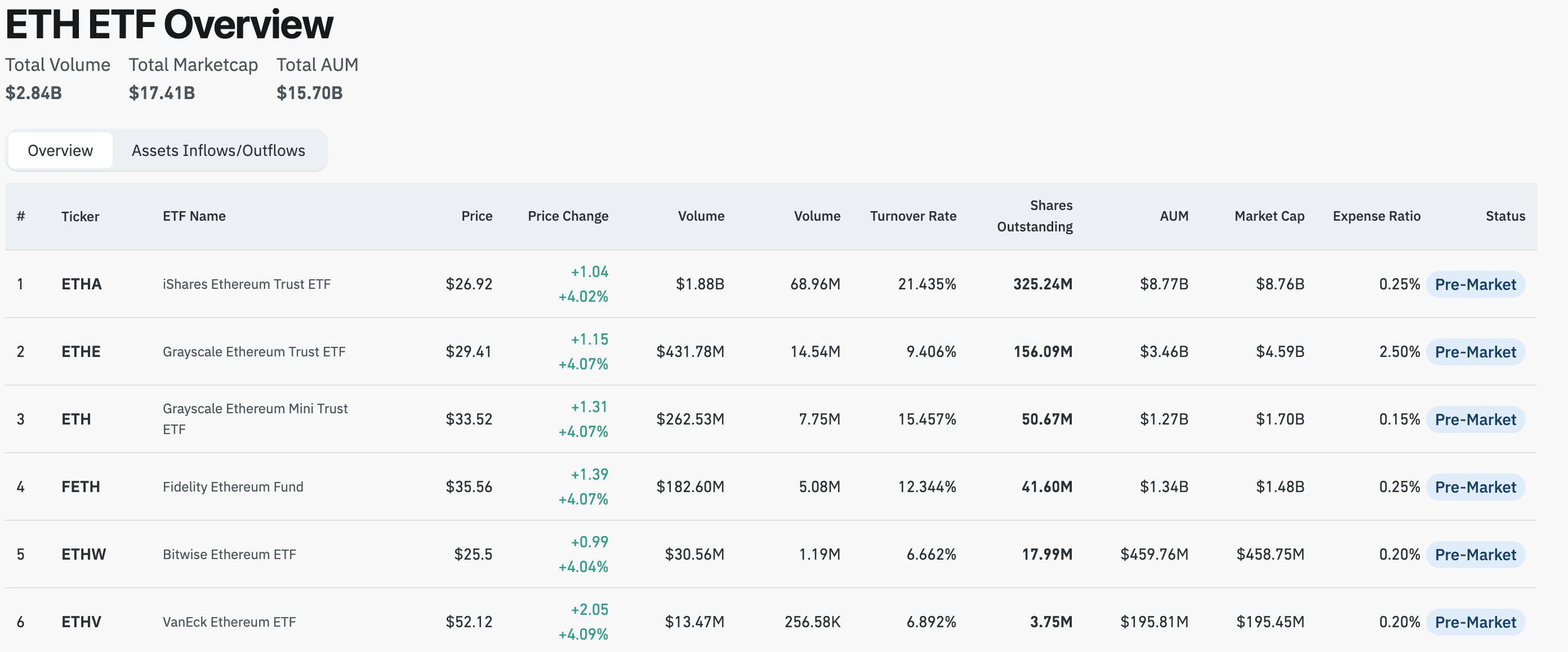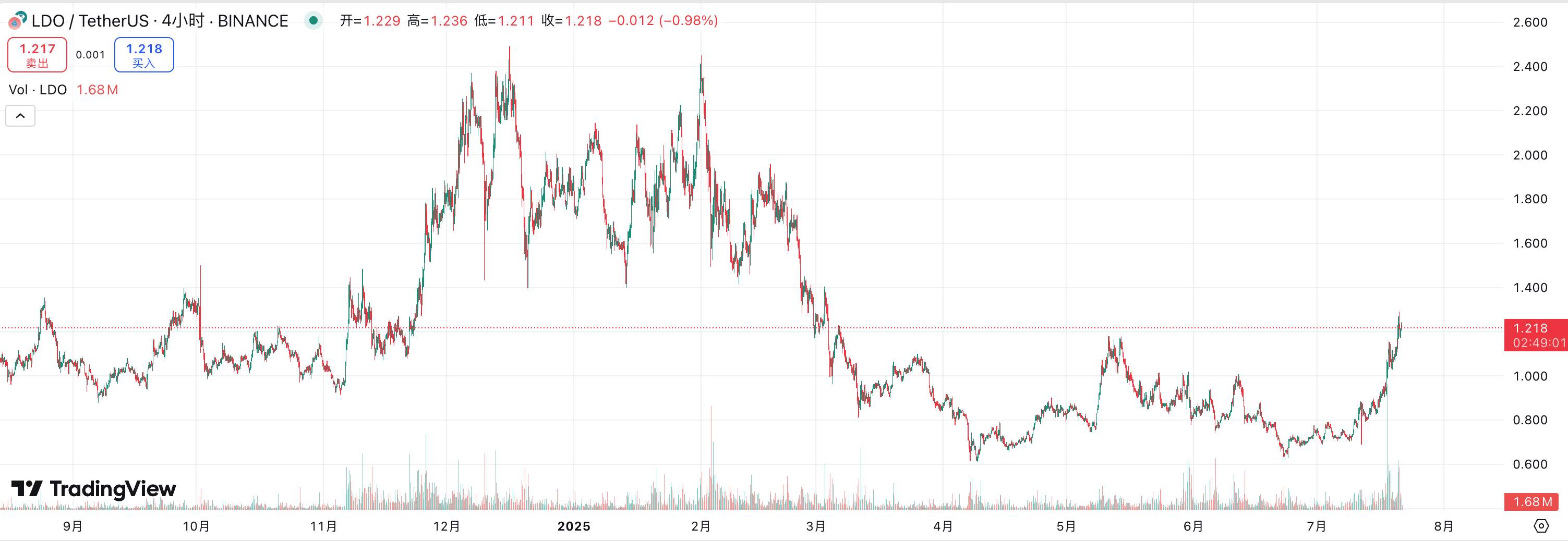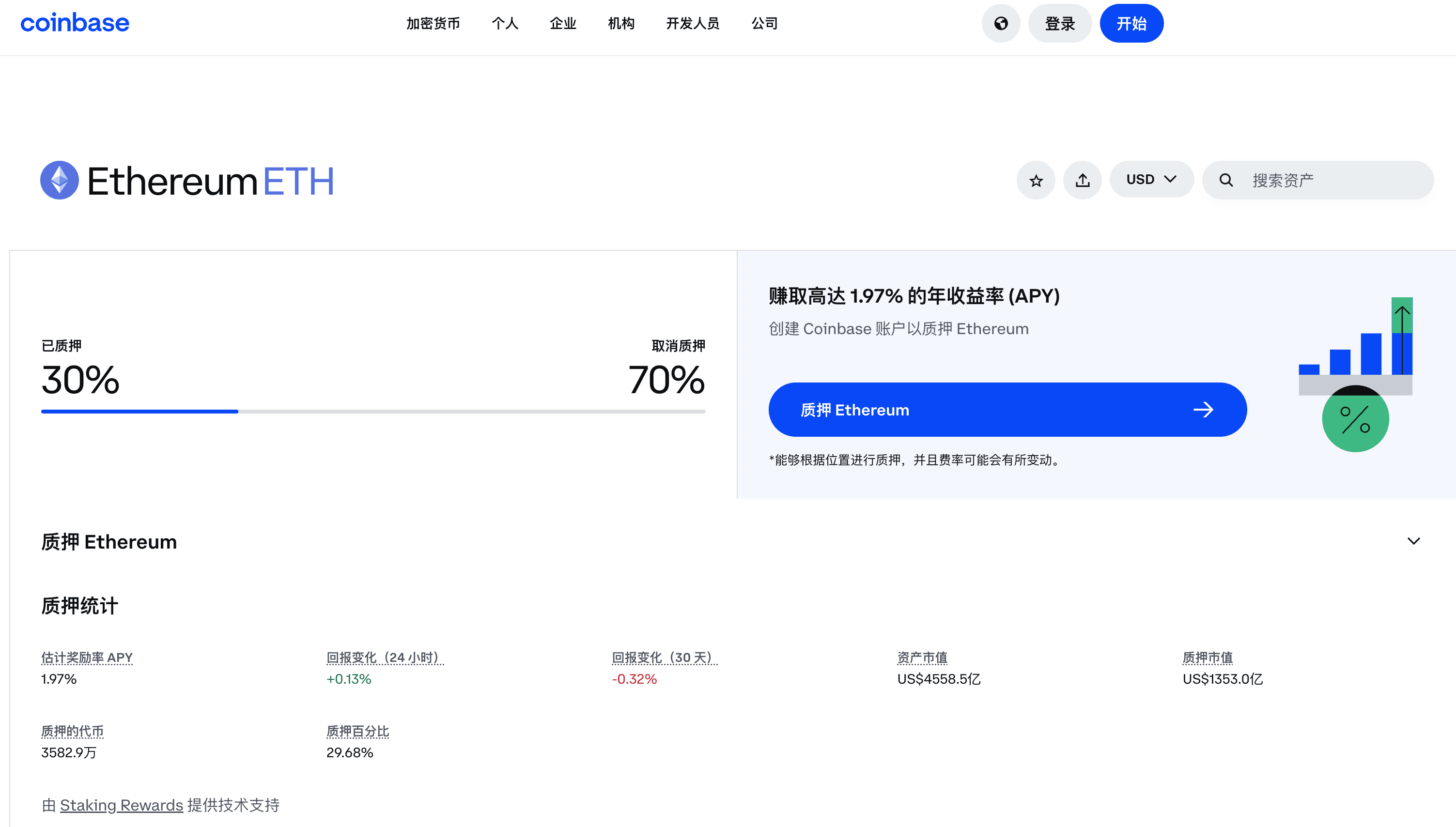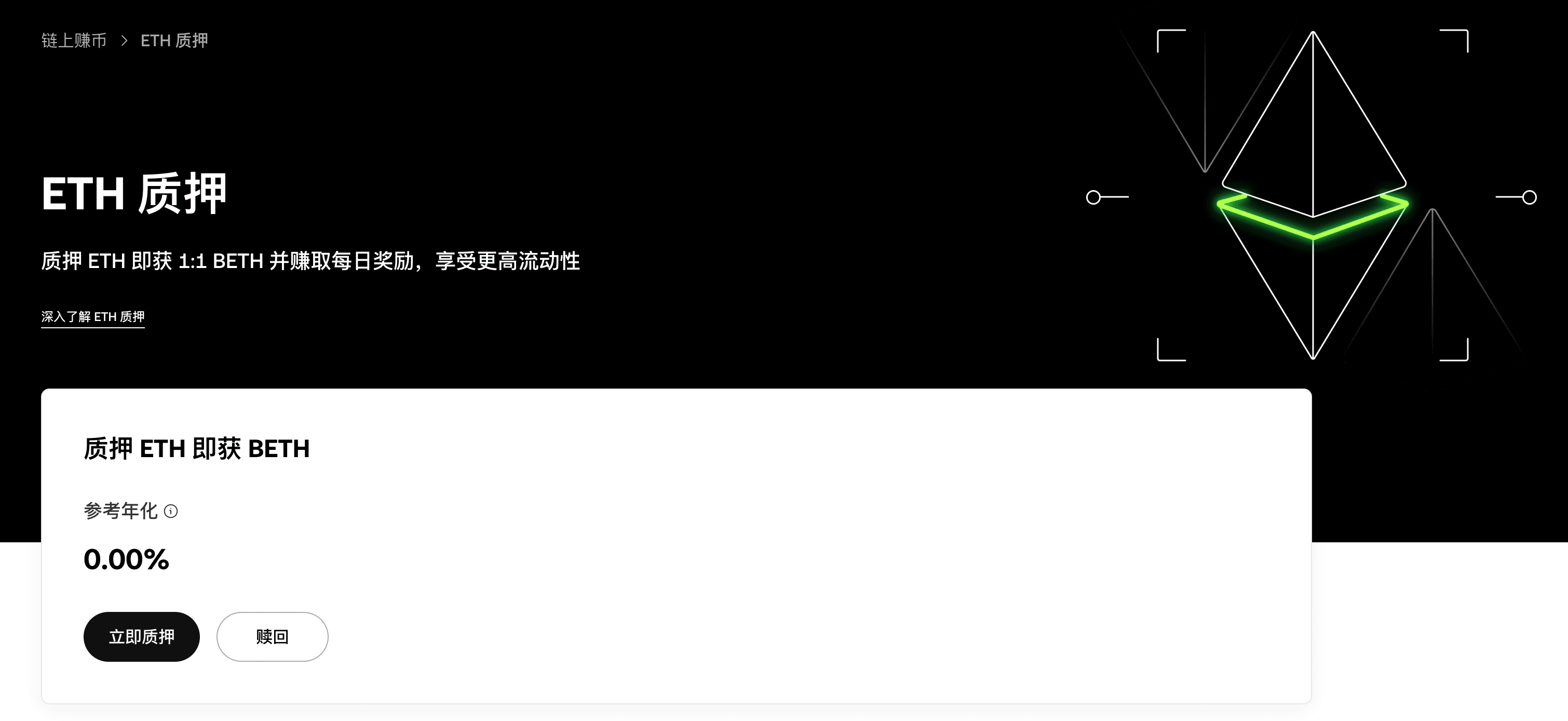On July 17, global asset management giant BlackRock made another precise move—its iShares Ethereum Trust (ETHA) officially submitted the 19b-4 filing to the U.S. Securities and Exchange Commission (SEC), proposing to introduce staking functionality for its Ethereum ETF.
Although similar proposals had been submitted earlier by peers such as Franklin Templeton, Grayscale, 21Shares, and Fidelity, market sentiment instantly heated up when BlackRock entered the fray. The reason is simple: BlackRock may not be the fastest mover, but it always ends up being the one that 'successfully clears,' reigniting strong expectations from the outside for the SEC to approve staking crypto ETFs.
According to analysts' estimates, the SEC is expected to give a preliminary response to the early submitted staking proposals before October this year. If the review goes smoothly, formal approval could be advanced to the fourth quarter of 2025.
Currently, the total assets under management of Ethereum spot ETFs have exceeded $17 billion, with ETHA leading the pack at $8.7 billion. If the staking functionality is approved, it will not only reshape the investment logic of Ethereum but will also inject new growth momentum into the entire on-chain ecosystem. This article will focus on this historic turning point, systematically outlining which sectors and projects will benefit first after the introduction of the staking mechanism in Ethereum ETFs.

From a speculative tool to a yield asset, ETH's asset attributes are being reshaped.
For ETH, the launch of a staking ETF may signify a structural reevaluation of asset nature.
Compared to traditional financial assets, Ethereum has a 'native advantage'—it is not only a speculative asset but can also earn staking rewards through on-chain validation, with a current actual annualized return rate of about 3.5%. Once the ETF is allowed to introduce a staking mechanism, its investment logic will upgrade from a singular price appreciation expectation to a dual-engine drive of 'price + yield.' This model is similar to earning interest on government bonds or receiving dividends from blue-chip stocks, and it will become the first U.S. cryptocurrency ETF to provide returns to institutional and retail investors. This shift may turn Ethereum into a financial asset capable of generating returns within the regulated investment tools, making it an attractive option in traditional finance.
Eric Jackson, founder of EMJ Capital, has predicted that Ethereum is expected to hit $10,000 or even higher in this cycle. His model attributes ETH's potential growth drivers to four major factors: its stable 3.5% staking yield, the net negative issuance trend since the merger, the new demand brought by the soon-to-be-approved staking ETF, and the growth in network activity driven by Layer 2 and tokenized assets. Jackson's team pointed out that the supply-demand structure of ETH is rapidly tightening, and if the ETF progresses beyond expectations, combined with large-scale adoption of Layer 2, it is not a fantasy for ETH to break through $15,000 in the coming quarters.
Who are the real winners in the staking track?
Liquid Staking Protocols
Integrating staking functionality into Ethereum ETFs poses the most significant technical and operational challenge of liquidity management. Unlike the 'T+0 tradable' characteristics of traditional financial assets, once ETH is staked, it will be locked in the network, and exiting requires going through a formal unbonding process. According to the design of the Ethereum protocol, when validators choose to exit staking, they must wait through several stages such as queuing for block production and block confirmation, and the exit queue is limited by the current network load—during peak times, this process may take several days or even weeks.
This poses a tricky problem for ETF issuers. ETF products need to ensure that users can buy, sell, and redeem their shares at any time. However, if a large amount of ETH held by the fund is locked in staking and encounters sudden large-scale redemption requests, the fund may not be able to liquidate assets in a short time, leading to liquidity mismatch risks.
To alleviate this issue, ETFs often reserve some unpledged ETH as a liquidity buffer, but this sacrifices staking yields and weakens the inherent appeal of 'on-chain yields' that the product should possess. A more operational solution is to leverage Liquid Staking Derivatives (LSD).

Its core mechanism lies in generating tradable 'staking certificate' tokens (e.g., Lido's stETH, Rocket Pool's rETH) from staked ETH. These tokens represent ownership of staked ETH and can be traded on the secondary market, allowing staked assets to maintain on-chain liquidity. If Ethereum ETFs use the LSD protocol, they can continuously earn staking yields while being able to meet redemption demands at any time through derivative assets like stETH, addressing the liquidity pain points of traditional staking. This makes the LSD protocol a key 'liquidity intermediary' between ETFs and the Ethereum network.

The market has quickly reacted to this logic. After the news of BlackRock's ETHA staking application was announced, Lido governance token LDO surged over 20% within 24 hours, indicating that funds are rapidly flowing into potentially benefiting LSD sectors. If the SEC formally approves Ethereum ETFs that support staking, the TVL of protocols like Lido and Rocket Pool is expected to expand significantly, and their native tokens will also welcome a new round of valuation reassessment.

Centralized Trading Platforms
The ETF issuer's choice to neither build their own nodes nor rely on decentralized protocols leads to the most realistic and convenient solution being to use centralized staking service providers like Coinbase, OKX, etc. These platforms have established mature node infrastructure and can provide institutional clients with one-stop staking solutions, including node operation, reward distribution, key management, etc., significantly lowering the technical threshold.
Taking Coinbase as an example, its launched liquid staking token cbETH (Coinbase Wrapped Staked ETH) provides users with a way to enjoy both staking rewards and on-chain liquidity simultaneously. cbETH represents the ETH staked by users on Coinbase, allowing them to transfer, trade, or use it for on-chain interactions without having to unstake it. Its principle is similar to Lido's stETH but issued and managed by a regulated centralized platform, making it more acceptable to regulatory agencies and better suited to the compliance needs of traditional financial institutions.

Other trading platforms like Kraken, OKX, etc., also provide similar staking services and can offer customized solutions for institutional users. It is worth mentioning that although centralized staking services have obvious advantages in convenience and compliance, they also face certain risk hazards. For example, the SEC has previously initiated enforcement actions against the staking services of centralized trading platforms, indicating that they constitute 'unregistered securities issuance.'

Overall, in the current context of tightening compliance requirements, centralized trading platforms, with their technical maturity and licensing resources, remain one of the important options for ETF issuers to achieve on-chain staking functionality. Particularly, products like cbETH may become representative assets that coexist with liquidity and yield in the 'compliance version of LSD' sector.
Summary
The strong expectation for the approval of Ethereum ETF staking not only signifies that traditional finance is officially entering the 'on-chain yield era,' but also marks a complete transformation of ETH from a speculative product to a yield-generating asset. With institutions like BlackRock taking the lead in this space, LSD protocols, node operators, and centralized exchanges are stepping into the spotlight, welcoming a new window for valuation reassessment.
As regulations become clearer and infrastructure improves, this multi-party collaboration around 'ETH staking yields' may become a key point for the integration of Web3 and Wall Street. Whoever can win the ETF cooperation resources first will occupy a more central position in the next crypto cycle.



